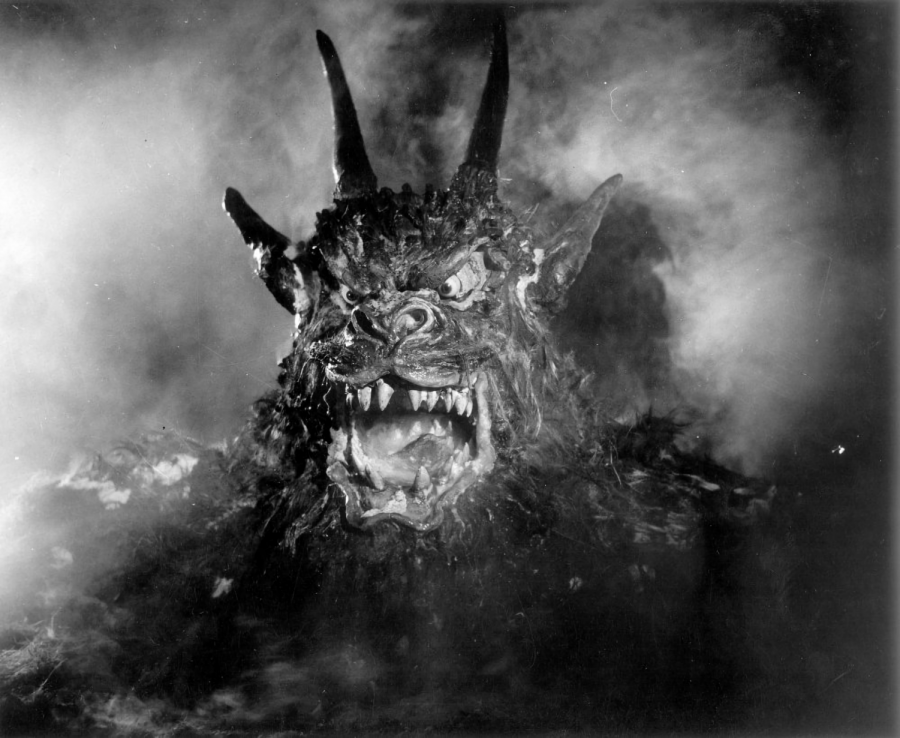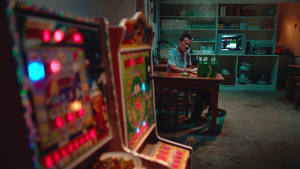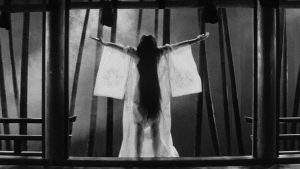Theme of the Month: Midnight Movies (Part One)
October 9, 2019
Theme of the Month is an article series designed to investigate examples of film, television, and writing that fall under a certain category. The following works are all “midnight movies,” or films that have gained a cult following since their releases.
“Night of the Demon”
Chosen… singled out to die… victim of his imagination or victim of a demon?
Released in 1957 after a troubled and exhausting production period, “Night of the Demon” is a classic and well-crafted look into the world of the occult. It follows American professor John Holden as he travels to Britain to expose cult leader Julian Karswell, but he finds his skepticism tested after he becomes subject to a series of unsettling, devilish events.
The film was struck with issues right out of the gate, as the British Board of Film Censors refused to give it anything less than an “X” rating, one member calling its “supernatural hokum” repulsive. 21 months and three resubmittals later, shooting was given clearance, though its production turmoil was far from over.
For a bit of background, the concept of “Night of the Demon” was unique in the sense that the titular demon was to make no lasting appearance onscreen. Director Jacques Tourneur theorized that if the audience was captivated enough, they would conjure up the demon themselves, in addition to accepting the possibility that the monsters are only figments of the characters’ paranoia.
Producer Hal Chester disagreed. Insisting on making the creature visible, he continually inserted himself into the movie’s production, doubting Tourneur’s judgment calls at every opportunity. Star Dana Andrews, fed up with the interference, threatened to leave if the “director wasn’t allowed to direct the picture.” The film wasn’t even able to escape damage after shooting wrapped, with even more tampering being done in the editing room.
The creators’ attitudes towards Chester can best be summed up with a statement from the original screenplay writer, Charles Bennett: “as far as I’m concerned, if he walked up my driveway right now, I’d shoot him dead.”
To add further insult to injury, the distributors added taglines such as “DEMONS! MONSTERS FROM HELL! YOU WILL ACTUALLY SEE THEM ON THE SCREEN!” and plastered the demon’s face over every promotional poster imaginable. (I used an image of the demon for this article. Sorry, Tourneur, but it is the most recognizable part of the film.)
For as much as Andrews and Tourneur feared “Night of the Demon” was forever altered, modern critical reception has been incredibly warm. The monster that Andrews once thought was “laughable” is now regarded as ugly and terrifying by some, and Tourneur’s mark still lingers on the finished product.
Newly restored and with its alternate versions available for comparison, “Night of the Demon” is ready to be watched and enjoyed by those who might not have had the chance. Just don’t let that parchment slip away…
“Spider Baby”
“Screams and moans and bats and bones
Teenage monsters in haunted homes
The ghost on the stair, the vampire’s bite
Better beware, there’s a full moon tonight”
So booms the announcer in “Spider Baby’s” opening credits, whose strange, picture book illustrations preview an even stranger film. But have caution, creature feature fans, for there are no ghosts nor vampires in this movie: just a decrepit house and one very, very peculiar family.
The dwindling members of the Merrye clan suffer from a genetic disease that causes its host to regress mentally, yet retain the physical strength of adults. Lon Chaney Jr. stars as Bruno, their loyal caretaker, and finds his ability to control the “children” tested when distant relatives lay claim to the estate and insist upon spending the night.
Shot over 12 days at the tail end of the summer of 1964, “Spider Baby” is an odd piece of cult cinema by Jack Hill, known for his seminal blaxploitation films “Coffy” and “Foxy Brown.” It didn’t see an official release until 1968 and, after several name-changes, quickly fell into obscurity.
The performances are standard, Chaney Jr.’s being the standout, but are far better than you’d expect from an exploitation film; Sid Haig (who plays Ralph, the least developed of the children) provides an offbeat performance as well.
However, for as much admiration I can give “Spider Baby’s” atmosphere or acting, there’s no correct, end-all-be-all way to approach the film. It’s by turns creepy and bitingly funny, never taking itself too seriously but still providing enough drama to involve the viewer in its bizarre story.






